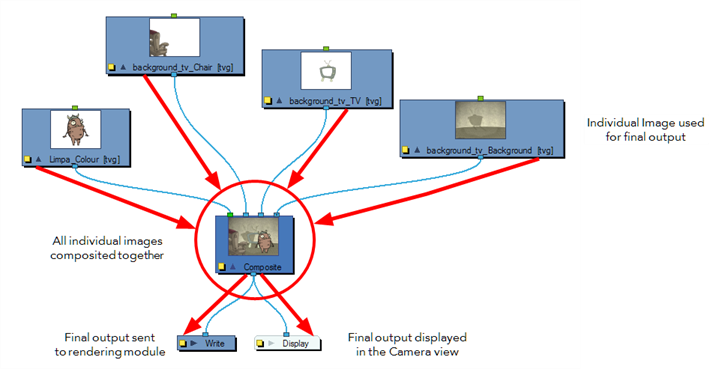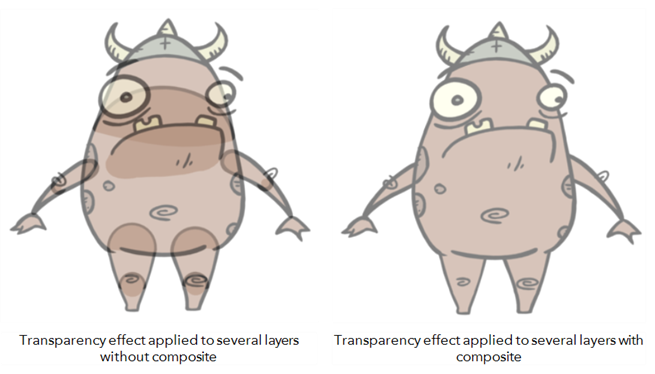- Modules
- Organizing and Troubleshooting the Node View
- Composite Ordering
Composite Ordering
T-COMP2-001-006
In this topic, you will learn about the Composite node and its ordering rules. This is critical for doing efficient compositing in Harmony.
Material
To complete this topic, you will need the following from the sample material you downloaded:
- MO-COMP2-001/Nodes_Setup_BG
Author
- Marc Fortin
- Senior Solutions Specialist
- toonboom.com
The Composite node allows you to use several images and output a single image. You can compare that to doing pre-compositions in editing software. You can connect several drawing, image generators and effect nodes in your Composite node and one bitmap (or vector in some cases) comes out of it.
Refer to the following example to connect this effect:

Using Composites is necessary if you wish to apply effects to several layers combined. For example, if you want a character rig that is composed of several layers to appear transparent, you must connect all the layers of your character's rig to the same composite, and connect a Transparency effect to that composite.


By default, the image resulting from the Composite node is a bitmap. The layers are composited together depending on their position on the Z-axis (forward-backward) first, then their order in the Composite node. If two images are at the same position on the Z-axis, their order in the Composite will determine which one is displayed in front and which one is displayed behind.
Time Estimated 10 mins
Difficulty Level Intermediate